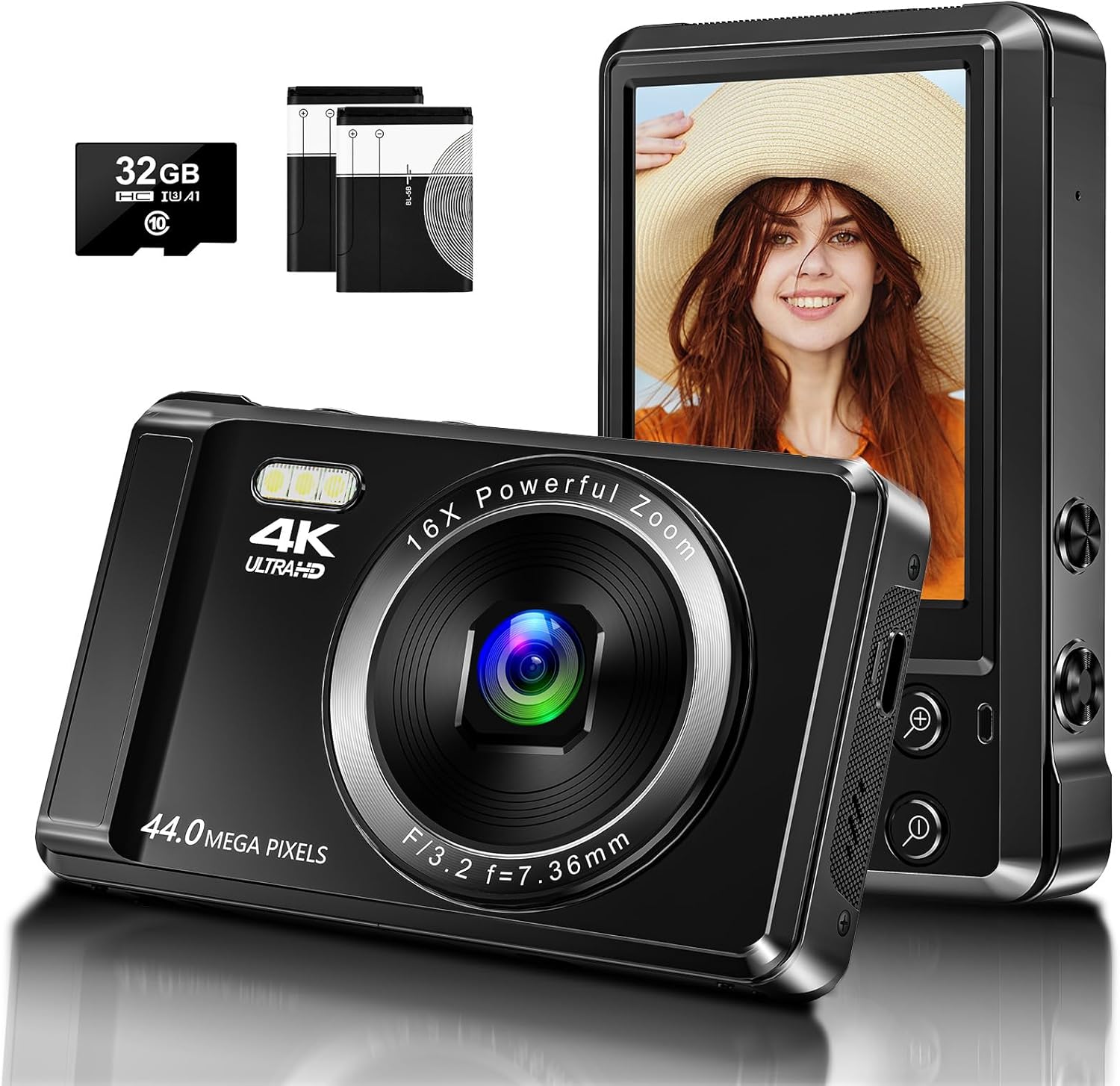






Price: $85.65
(as of Apr 07, 2025 10:42:51 UTC - Details)
What is the Best Starter DSLR Camera? A Comprehensive Guide
Introduction
Are you thinking about diving into the world of photography? Do you find yourself asking, "What is the best starter DSLR camera?" You’re not alone! Choosing the right camera can be overwhelming, especially with so many options available on the market. Whether you’re a complete beginner or someone who wants to upgrade from a smartphone, finding a camera that fits your needs is crucial. In this guide, we’ll explore various aspects of starter DSLR cameras, helping you make an informed decision. Let’s get started!
Understanding DSLR Cameras
What is a DSLR Camera?
A Digital Single-Lens Reflex (DSLR) camera is a popular choice for photographers of all skill levels. Unlike compact cameras or smartphones, DSLRs have a larger sensor, which allows for better image quality, especially in low light. If you're serious about photography, understanding the basics of how a DSLR works will help you appreciate its advantages.
Why Choose a DSLR?
When asking "What is the best starter DSLR camera?" it’s essential to understand why you might want a DSLR in the first place. DSLRs offer interchangeable lenses, manual controls, and superior image quality. They can grow with you as your skills improve, making them a worthwhile investment for budding photographers.
Key Features to Look for in a Starter DSLR
Image Quality: Megapixels and Sensor Size
One of the first things to consider when choosing a starter DSLR is image quality. Megapixels are often discussed, but they aren't the only factor. The sensor size plays a significant role. Larger sensors capture more light, resulting in better images. Look for cameras with APS-C sensors as they strike a balance between size and performance.
Ease of Use: User-Friendly Controls
As a beginner, you’ll want a camera that’s easy to use. Look for models with intuitive controls and a clear menu system. Some cameras offer guided modes that help you learn how to use different settings. This feature can be particularly helpful when you’re just starting.
Autofocus System: Speed and Accuracy
A good autofocus system is crucial for capturing sharp images, especially if you’re photographing moving subjects. Look for a camera that offers fast and reliable autofocus to ensure that you don’t miss those perfect moments.
Popular Starter DSLR Models
Canon EOS Rebel T7
The Canon EOS Rebel T7 is a fantastic choice for beginners. It comes with a 24.1-megapixel sensor, built-in Wi-Fi, and an easy-to-navigate interface. The camera also has an impressive autofocus system, making it ideal for both stills and video.
Nikon D3500
Another excellent option is the Nikon D3500. This camera features a 24.2-megapixel sensor and offers a Guide Mode that helps new users understand the various settings. Its compact design makes it easy to carry, and the battery life is impressive, allowing for extended shooting sessions.
Pentax K-70
For those who want something a bit different, the Pentax K-70 is a solid starter DSLR. It’s weather-sealed, making it a great option for outdoor photography. With a 24-megapixel sensor and built-in image stabilization, this camera can handle a variety of shooting conditions.
Accessories to Enhance Your Photography Experience
Lenses: Choosing the Right One
When you start with a DSLR, you often get a kit lens, but investing in additional lenses can expand your creative options. A prime lens is great for portraits, while a wide-angle lens is perfect for landscapes. Understanding the types of lenses available will help you elevate your photography.
Tripods: Stability Matters
A sturdy tripod is essential for long exposures and low-light photography. It helps prevent camera shake and allows for sharper images. Look for a tripod that is lightweight and easy to carry, especially if you plan to shoot outdoors.
Camera Bag: Protect Your Gear
A good camera bag protects your equipment and makes it easier to transport. Look for a bag with padded compartments to keep your camera and lenses safe. Consider a bag that offers quick access so you can capture spontaneous moments.
Tips for Getting Started with Your DSLR
Learn the Basics of Composition
Once you have your camera, it’s time to learn about composition. The rule of thirds, leading lines, and framing are essential concepts that can dramatically improve your photos. Practice these techniques regularly to develop your eye for photography.
Experiment with Settings
Don’t be afraid to experiment! Learn how to use different settings like aperture, shutter speed, and ISO. Each setting affects the outcome of your photo, and experimenting will help you understand how to achieve the results you want.
Post-Processing: Editing Your Photos
Editing is a crucial part of photography. Familiarize yourself with software like Adobe Lightroom or Photoshop. Even basic edits can enhance your images, helping you achieve a professional look.
Conclusion
Choosing the right starter DSLR camera is an exciting journey that opens up a world of creativity. By considering factors like image quality, ease of use, and autofocus systems, you can find the perfect camera to suit your needs. Remember to explore different models like the Canon EOS Rebel T7, Nikon D3500, or Pentax K-70, and don’t forget to invest in essential accessories. With practice and dedication, you’ll be capturing stunning images in no time. So, what is the best starter DSLR camera for you? Take your time, explore your options, and enjoy the art of photography!
